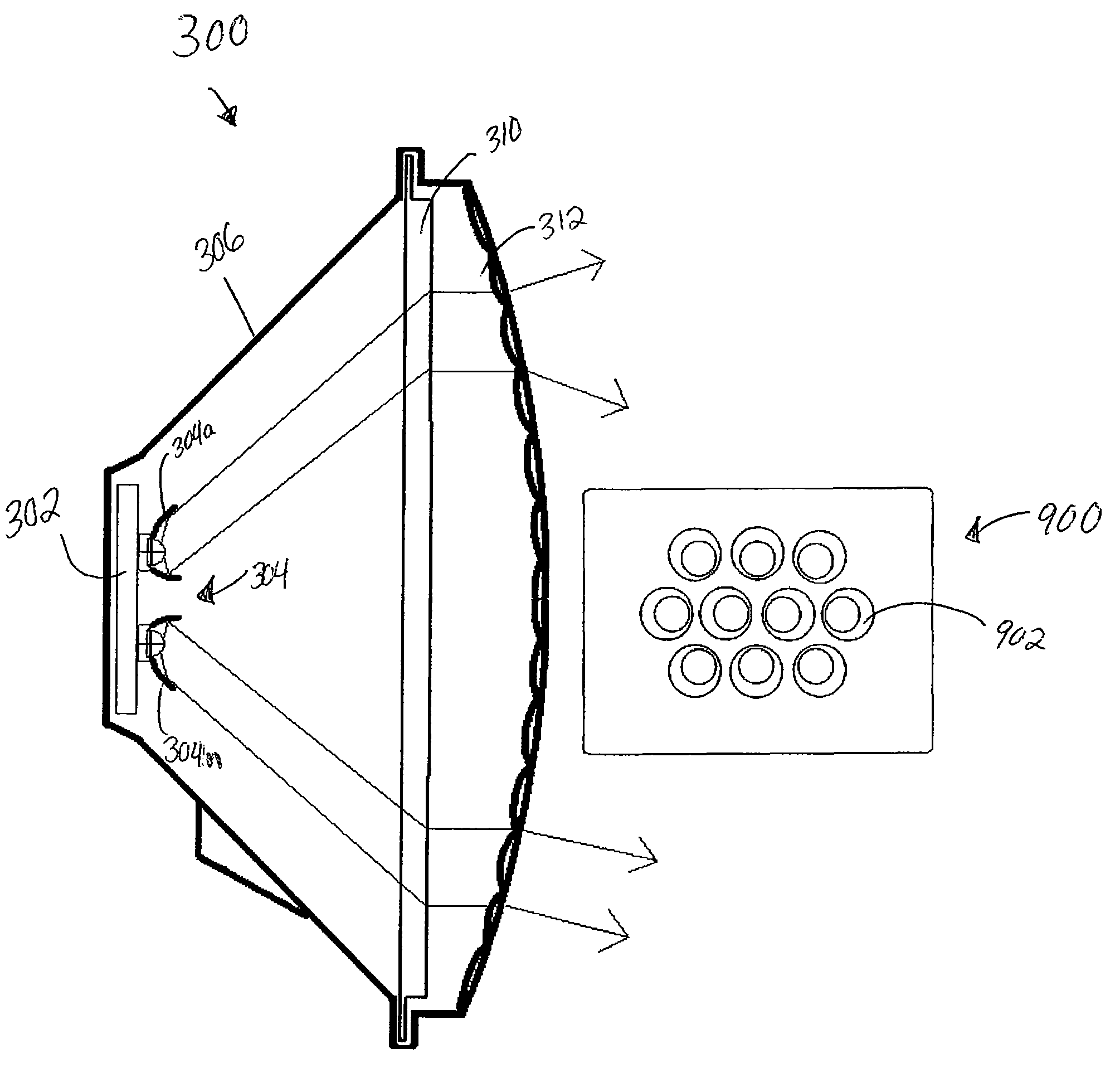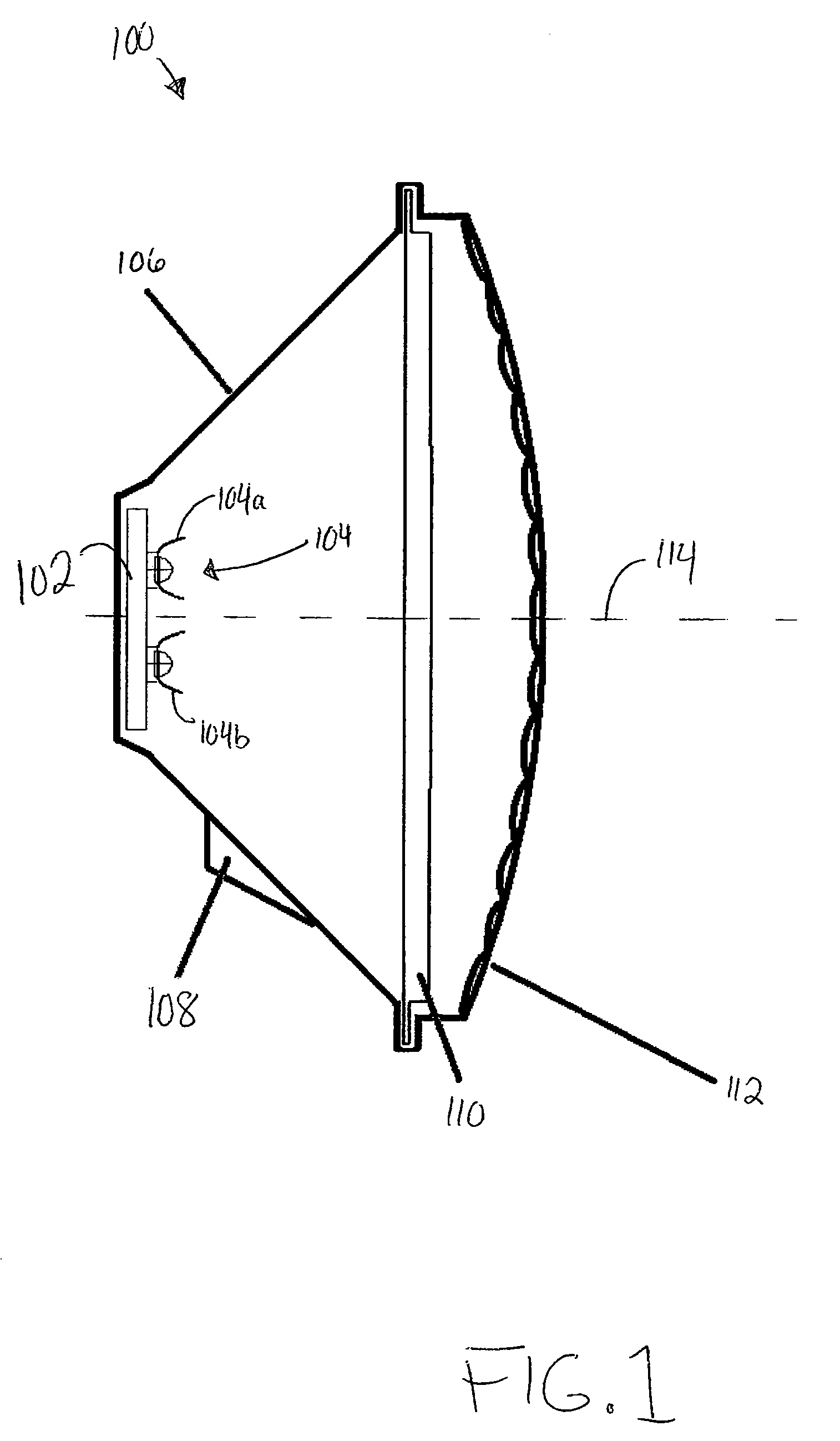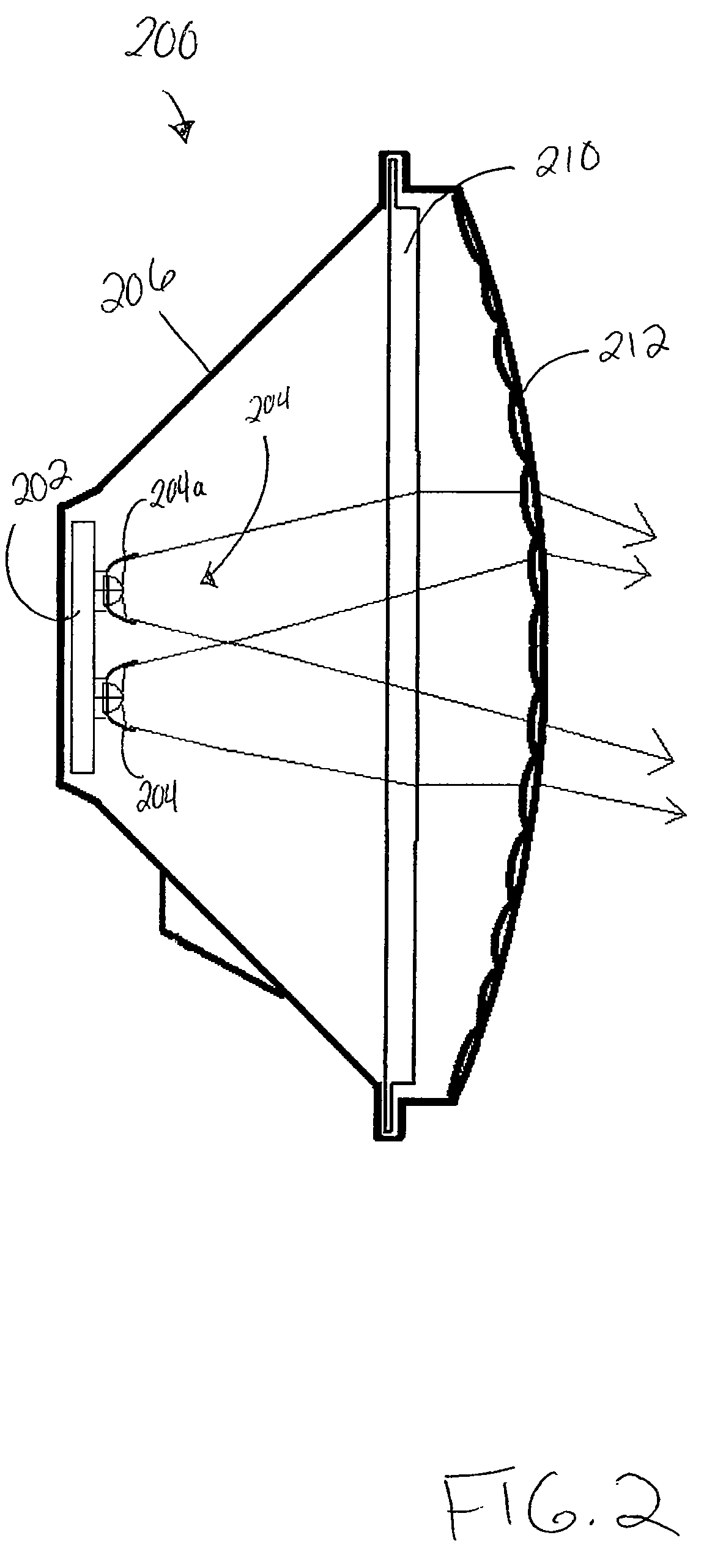Light emitting diode module with improved light distribution uniformity
a light-emitting diode and module technology, applied in the field of light sources, can solve the problems of poor light uniformity across the lens surface, poor light uniformity, and objectionable, and achieve the effect of improving light distribution uniformity
- Summary
- Abstract
- Description
- Claims
- Application Information
AI Technical Summary
Benefits of technology
Problems solved by technology
Method used
Image
Examples
second embodiment
[0030]FIG. 2 depicts a traffic head assembly 200 that may be adapted to benefit from the present invention. Like the assembly 100, the assembly 200 comprises an LED array 202 comprising a plurality of LEDs and a reflector optic 204 surrounding the LED array 202. Specifically, as illustrated in more detail in FIG. 4, which depicts one embodiment of a reflector optic 204, the reflector optic 204 comprises a plurality of reflector cups 204a-204n, each reflector cup 204a-204n being positioned around an individual LED 400. The illustrated reflector cup 204a has revolved and surface symmetry. Referring back to FIG. 2, in one embodiment, the assembly 200 also comprises a housing 206, a Fresnel lens 210 and a spreading lens 212.
[0031]As illustrated, the LED array 202 and reflector optic 204 are configured so that light emitted by the LED array 202 is not tilted (i.e., is received substantially straight on or at a minimal angle by the Fresnel lens 210 and spreading lens 212). As a result, th...
third embodiment
[0034]In one embodiment, the reflector cups are not tilted, but rather have non-symmetric curvature in order to achieve the tilted reflector effect. FIG. 6A, for example, depicts a reflector optic 600a (i.e., reflector cup), in which the curvature of the reflector optic 600a is non-symmetric about a center axis 602a. That is, a first section 604a of the reflector optic's perimeter has a larger radius than a second section 606a of the reflector optic's perimeter. The non-symmetric curvatures may be “blended” together along the sidewalls of the reflector optic 600a. By altering the curvature of the reflecting surface non-symmetrically with respect to the center axis 602a, light is tilted / directed away from center axis 602a. In one embodiment, the curvature at any one point on the reflector optic 600a is between approximately zero degrees and approximately ninety degrees with respect to the center axis 602a. In one embodiment, the resultant tilt has a tolerance of ±10°.
fourth embodiment
[0035]FIG. 6B, on the other hand, depicts a reflector optic 600b (i.e., reflector cup), in which the slope of the reflector optic 600b is non-uniform. That is, a first section 604b of the reflector optic's perimeter has a higher slope than a second section 606b of the reflector optic's perimeter. For example, as illustrated, a first angle 608b between a vertical line and the slope of the first section 604b is less than a second angle 610b between the same vertical line and the second section 606b. In one embodiment, the second angle 608b is at least five degrees greater than the first angle 610b.
[0036]As illustrated in FIG. 9, which depicts an array 900 of reflector optics (i.e., reflector cups 902) with non-symmetric curvature, the reflector cups 902 can also be fanned out radially. In this case, the light / tilt angle can be a function of the position away from the central optical axis of a signal head assembly.
[0037]As discussed with respect to FIG. 6, one embodiment of an LED-bas...
PUM
 Login to View More
Login to View More Abstract
Description
Claims
Application Information
 Login to View More
Login to View More - R&D
- Intellectual Property
- Life Sciences
- Materials
- Tech Scout
- Unparalleled Data Quality
- Higher Quality Content
- 60% Fewer Hallucinations
Browse by: Latest US Patents, China's latest patents, Technical Efficacy Thesaurus, Application Domain, Technology Topic, Popular Technical Reports.
© 2025 PatSnap. All rights reserved.Legal|Privacy policy|Modern Slavery Act Transparency Statement|Sitemap|About US| Contact US: help@patsnap.com



